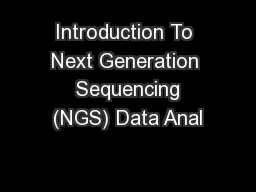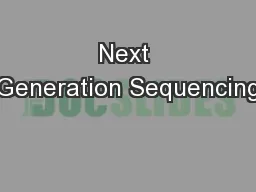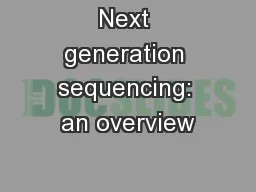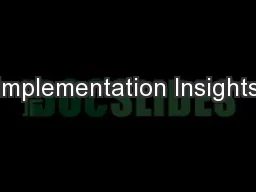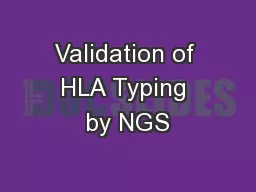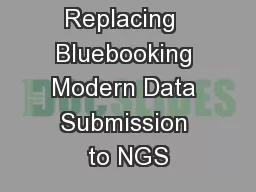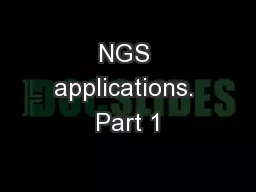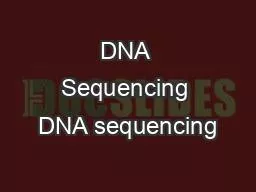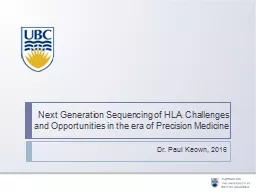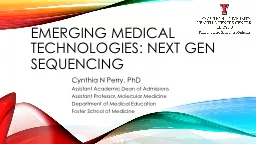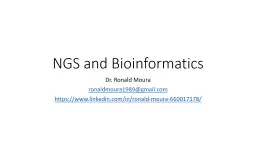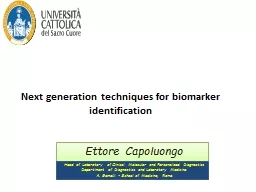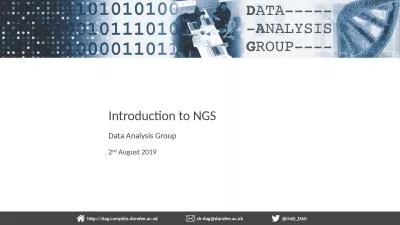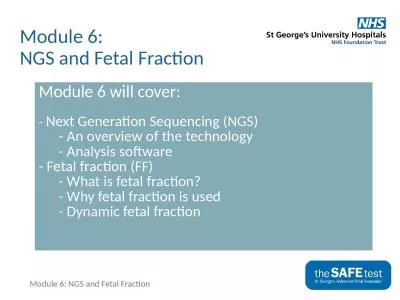PPT-Introduction To Next Generation Sequencing (NGS) Data Anal
Author : karlyn-bohler | Published Date : 2017-04-06
Jenny Wu Outline Goals Practical guide to NGS data processing Bioinformatics in NGS data analysis Basics terminology data formats general workflow etc Data Analysis
Presentation Embed Code
Download Presentation
Download Presentation The PPT/PDF document "Introduction To Next Generation Sequenc..." is the property of its rightful owner. Permission is granted to download and print the materials on this website for personal, non-commercial use only, and to display it on your personal computer provided you do not modify the materials and that you retain all copyright notices contained in the materials. By downloading content from our website, you accept the terms of this agreement.
Introduction To Next Generation Sequencing (NGS) Data Anal: Transcript
Download Rules Of Document
"Introduction To Next Generation Sequencing (NGS) Data Anal"The content belongs to its owner. You may download and print it for personal use, without modification, and keep all copyright notices. By downloading, you agree to these terms.
Related Documents

